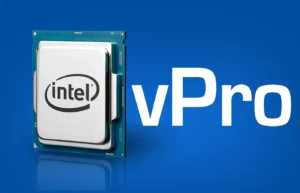
Are you wondering which GPU to choose for your gaming rig in 2025?
The battle between Intel Arc and NVIDIA RTX graphics cards is heating up, and it’s no surprise that gamers are curious about which one offers the best performance, features, and value for money.
As both brands push the envelope in terms of graphics power, performance, and price, it’s essential to understand how each stands out.
In this article, we’ll break down the key differences between Intel Arc and NVIDIA RTX, evaluating their performance, value, features, and overall gaming experience to help you make an informed decision for your 2025 build.
Let start!
The Growing Competition in the GPU Market
The GPU market has traditionally been dominated by NVIDIA and AMD, but Intel has recently entered the scene with its Intel Arc series. Take a look at the comparison table to understand the differences better.
| Feature | Intel Arc (2025 Models) | NVIDIA RTX (2025 Models) |
| Ray Tracing & AI Features | Supports Ray Tracing and AI tools like XeSS for frame rate boost | Advanced Ray Tracing and DLSS for enhanced visuals and AI-based performance |
| Performance | Great for 1080p and 1440p gaming, decent 4K gaming | Top-tier performance, excels in 4K gaming with high frame rates |
| Price | Competitive pricing, great value for budget gamers | Premium pricing for high-end performance and features |
| Target Audience | Budget-conscious gamers, mid-range gaming setups | Serious gamers, 4K gaming enthusiasts |
| 4K Gaming Performance | Decent, but not on par with high-end models | Superior 4K performance with DLSS for smoother experience |
| Gaming Community Support | Growing, but not as established as NVIDIA | Established, with better compatibility and game optimizations |
| Additional Features | XeSS (AI upscaling), affordable with AI integration | DLSS (AI upscaling), ray tracing excellence, broader support |
| Overall Value | Great for gamers on a budget without sacrificing too much power | Best for gamers wanting the latest tech, top-tier visuals, and future-proofing |
| Long-Term Investment | Offers solid value but may not keep up with high-end demands | Offers long-term value with superior support and optimization |
While NVIDIA’s RTX lineup has been known for offering exceptional performance, cutting-edge features, and a solid reputation in the gaming community, Intel Arc is shaking things up by offering competitive pricing and impressive performance metrics.
What Do Intel Arc and NVIDIA RTX Offer?
Before diving into which GPU is the better choice, let’s take a quick look at what both have to offer.
Here’s an overview of their key features:
Intel Arc Graphics (2025 Models)
Intel Arc GPUs are designed for gamers and creators, offering powerful performance with competitive pricing. Intel Arc’s key features include:
Do you know,
As per the reports Intel emerged as the leading vendor in the global PC GPU market, capturing 67% of the market share.
Ray Tracing and AI Features: Like NVIDIA, Intel supports ray tracing, enhancing visuals by simulating realistic lighting and reflections.
Competitive Price Points: Intel has been pushing affordability without sacrificing too much in terms of power. This makes the Intel Arc an attractive option for budget-conscious gamers.
NVIDIA RTX Graphics (2025 Models)
NVIDIA’s RTX lineup has been a top choice for high-end gaming performance, offering advanced features and superior performance. Key features of NVIDIA RTX include:
Ray Tracing and DLSS: NVIDIA RTX cards offer the most advanced ray tracing technology available. They also use DLSS (Deep Learning Super Sampling), which boosts frame rates using AI, while maintaining high-quality visuals.
Top-Tier Performance: NVIDIA is known for delivering exceptional gaming performance, especially in 4K gaming. Their flagship RTX cards are known to provide the smoothest experience with the highest frame rates.
Performance: Where Does the Real Power Lie?
When it comes to performance, gamers are always looking for that edge to enhance their experience, whether it’s for competitive play or simply enjoying graphics-heavy titles in high settings.
Intel Arc
- Intel Arc provides impressive performance in the mid-range GPU category. Their performance is comparable to NVIDIA’s previous generation cards like the RTX 3060 and 3060 Ti. With improved driver support and optimization, Intel Arc is certainly a solid option for 1080p and 1440p gaming.
- Great for Budget Gamers: Intel’s Arc cards give good performance without breaking the bank.
According to one of the reports, In 2024, the worldwide gaming market was valued at approximately $27.97 billion with most shares occupied by budget-friendly gamers.
Decent 4K Gaming: While Arc handles 4K gaming decently, it’s not quite on par with the top-tier offerings from NVIDIA.
NVIDIA RTX
NVIDIA’s RTX cards are known for their superior gaming performance, especially for 4K gaming. Their higher-end models, such as the RTX 4080 and RTX 4090, deliver unparalleled frame rates, making them the preferred choice for gamers who demand high performance and top-tier visuals.
- Smooth 4K Gaming: With DLSS enabled, NVIDIA RTX cards can comfortably handle 4K gaming with high frame rates.
- Ray Tracing at its Best: The ray tracing performance in NVIDIA’s RTX lineup is superior making it ideal for gamers who want the most immersive graphics possible.
Additional Features: The Future of Gaming
When looking at Intel Arc vs NVIDIA RTX, it’s essential to consider the unique features each brand offers. These features can play a crucial role in the future-proofing of your gaming setup.
Intel Arc
Intel is introducing XeSS (Xe Super Sampling), which competes with NVIDIA’s DLSS. XeSS uses AI to upscale games to a higher resolution while maintaining high visual quality, which can be particularly beneficial for gamers with mid-range setups.
DLSS Alternative: XeSS provides an alternative to DLSS, though it’s still developing and may not be as optimized as NVIDIA’s offering.
Integrated AI Features: Arc cards benefit from Intel’s advancements in AI and machine learning, helping to enhance gaming and content creation performance.
NVIDIA RTX
NVIDIA’s DLSS technology has been around for a while and is a proven feature. It uses AI to upscale lower-resolution images in real-time, allowing for higher frame rates without sacrificing visual quality.
DLSS Excellence: NVIDIA’s DLSS is more widely adopted and is likely to continue being the standard for AI-driven upscaling.
Conclusion
So, which GPU should you choose in 2025: Intel Arc or NVIDIA RTX? The answer largely depends on your needs and budget. Here’s a quick summary to help guide your decision:
Ultimately, both Intel Arc and NVIDIA RTX offer great performance, but your choice will depend on how much you’re willing to spend and what kind of gaming experience you’re aiming for. If you’re looking to save money while still getting solid performance, Intel Arc is a great choice.
However, if you want the very best in graphics and performance, NVIDIA RTX remains the top contender for serious gamers in 2025.





